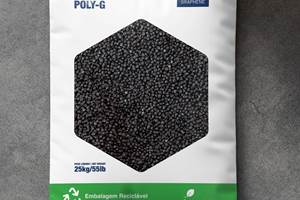Have You Considered the Sustainability Benefits of Liquid Color?
Add less pigment to the solid-waste or recycling streams, save energy, and reduce waste to landfill, among other advantages.
Whatever the color of your product, make it “greener” with liquid color. That was the message of a talk in a session on Green Molding as part of the PT Tech Days interactive webinar series on Oct. 22. This message was presented by Paul Maguire, CEO and president of Riverside Global, a leading supplier of liquid colors and additives.

Add up the energy savings in manufacturing liquid colorant, in transporting it to your plant, and in dispersing it in your process—plus zero waste to landfill after use—and the sustainability benefits could be substantial.
Maguire said liquid colors reduce coloring costs by as much as 50%, provide more uniform dispersion, and enhance flow and throughput rates or cycle times. But liquid-color users see “green” in other ways, too, he stated. Here are the major advantages he cited on the environmental side of the ledger:
• Use less pigment: Liquid color reportedly produces fully developed color with less pigment (often 30% less) than in pellet masterbatches. The reason is easier and better dispersion with the liquid carrier, which serves as a processing aid. What’s more, liquid colorant precoats the pellets in the feed section, starting the dispersion process even before the plastic melts, unlike the case with pellet concentrates. In addition, the enhanced accuracy of gravimetric metering of liquid color—a feature of dispensing systems produced by Riverdale’s sister company, Maguire Products—saves 10% in colorant versus volumetric metering, according to Maguire. The end result: less color ends up in the recycle stream (or solid-waste stream if not recycled), and less additional pigment is required to overcolor the reground scrap.
“Cut your color costs in half while increasing your sustainability.”
• Use less energy: Use of the liquid colorant vehicle enhances melt flow, reducing screw torque, and potentially allowing for a lower melt temperature. That, in turn, can mean shorter cooling times and lower load on chiller systems. The end result is up to 16% lower total energy consumption in molding and extrusion, according to Maguire said. That’s in addition to 90% lower energy consumption by Riverdale Global in dispersing the pigment in the liquid carrier, as compared with producing a solid pellet concentrate. And, because an equivalent amount of liquid color weighs 75% less than pellet masterbatch, that means less freight expense and energy to transport the product to customers. (Liquid colors also occupy 80% less warehouse space than pellets.)
• Send less waste to landfill: Riverdale Global’s “Return for Refill” program enables processors to send empty containers back to one of Riverdale Global’s local satellite plants for refill at no cost except shipping. Any colorant left in the drum will be returned to the customer after refilling, so none is lost.
• Make less waste in processing: Maguire said that liquids cut typical color-change times in half, which translates into half as much purge waste. In fact, some users don’t purge between colors, but simply start the next liquid color to push out the previous one. This reportedly can be a major advantage for blow molders with large accumulator heads, which are accustomed to long color-change times with conventional concentrates. Maguire also noted that reduced colorant waste stems from Riverdale’s sealed “pump-in-drum” system, which means customers never need to open the drum and risk having to clean up messy spills of highly concentrated colorant.
• Use more renewable resources: Most of Riverdale Global’s products use renewable plant-based carrier systems, rather than petroleum-based chemicals.
QUESTIONS ABOUT COLORANTS & ADDITIVES?
Learn more here.
Related Content
Masterbatches Reduce Gloss in PLA and PETG 3D Printed Products
Insight Polymers & Compounding’s two low-gloss additive masterbatches shown to boost appearance of 3D printed objects.
Read MoreGerdau Graphene Launches “First” Graphene-Enhanced PE Additive Masterbatch for Extruded Packaging and More
The company has also partnered with conglomerate Sumitomo Corp. for distribution of its graphene-enhanced masterbatches in Japan.
Read MoreResins & Additives for Sustainability in Vehicles, Electronics, Packaging & Medical
Material suppliers have been stepping up with resins and additives for the ‘circular economy,’ ranging from mechanically or chemically recycled to biobased content.
Read MoreBASF to Purchase Pyrolysis Oil Produced From Waste Plastics
Agreement with Arcus Greencycling GMBH anticipates a volume of 100,000 ton/yr.
Read MoreRead Next
How Polymer Melts in Single-Screw Extruders
Understanding how polymer melts in a single-screw extruder could help you optimize your screw design to eliminate defect-causing solid polymer fragments.
Read MoreLead the Conversation, Change the Conversation
Coverage of single-use plastics can be both misleading and demoralizing. Here are 10 tips for changing the perception of the plastics industry at your company and in your community.
Read MoreProcessor Turns to AI to Help Keep Machines Humming
At captive processor McConkey, a new generation of artificial intelligence models, highlighted by ChatGPT, is helping it wade through the shortage of skilled labor and keep its production lines churning out good parts.
Read More









.png;maxWidth=300;quality=90)
















